The Adventures Of... Boxset
Whoops, There Go My Trousers
In the mid-1970s, the British Film Industry was on its last legs. Television had effectively wiped it out. Cinemas were in decline as families stopped going to the pictures with any kind of regularity, and what movies were being shown tended towards a more adult audience. The Hollywood summer blockbuster had only been invented in 1975 with the release of Jaws, and while event movies like the disaster cycle and that space movie made by that kid George Lucas were mopping up box office receipts, the home-produced product tended not to do so well.
Since 1927, the British film industry had been encouraged by the Government which was eager for the nation's cinemas to show home-grown as well as Hollywood fare. There was a quota that required 25% of features shown in British cinemas had to be home grown. To back this up, from 1957 (a key year in the history of British cinema), 10% of the box office of foreign titles (including the Hollywood movies) was levied to finance British made movies. The Eady Levy meant that as long as most of a film was shot at a British studio or on British sovereign territory, by a registered British company it got a slice of the Eady money. If the movie cost less than £100,000 to make, you got double your money. This opened the floodgates for low budget British movies and encouraged outfits like Ealing, Hammer and Peter Rogers to turn out modest movies right up to the 1980s when like many great British ideas the Levy was ended by the Government of the time. It also encouraged filmmakers including Sidney Lumet, Stanley Donen, Richard Lester, Cubby Broccoli and most importantly Stanley Kubrick to make movies in the UK.
Around the late 1950s, movie censorship relaxed sufficiently and the infamous "X" certificate was introduced to permit overtly adult movies to be exhibited theatrically. This brought in the glory years of Hammer Films, a smattering of imported drive-in and later grindhouse movies, and most importantly to this review, naughty movies.
The description might sound a little coy, but these movies were by no stretch of the imagination explicitly sexual. More a pleasing shade of torquoise than properly blue. The fact is that Britain - even up to the present day - has never permitted the explicit depiction of sexual activity in anything other than videos strictly available only through licensed sex shops and in certain arthouse movies where standards are as double as the entendres in the less artistic movies. British adult movies were "Naughty" rather than pornographic, although much depends on your personal viewpoint.
In British movies, adult tastes were catered for in either of three ways - adult themes (the Angry Young Men pictures of the 1950s and 60s), straightforward horror (the Hammer movies) and Nudies. Nudies were the kind of picture spoofed at the start of Carry On Camping where Sid James and Bernie Bresslaw take Joan Sims and Dilys Laye to the pictures to see what the boys have sold as a movie about Camping. Quite innocent in their own peculiar way, the Nudies created the urban legend of the "dirty raincoat brigade". Between 1958 and 1968, Nudies were few and far between but nevertheless notorious. Then in 1968, the rapid changes overtaking society reached the film world and genuinely adult-themed (but still surprisingly coy) subjects started coming out.
Britain had been Carrying On since the late 1950s, but all their sex talk was sheer innuendo and nudity was restricted to odd flashes of Barbara Windsor's boobs, or the luminous white backsides of Kenneth Williams, Kenneth Connor and Leslie Philips. To the British, Sex has always been a dirty joke. The Victorians overreacted to it and tried to convince themselves it didn't exist, but the ribald joke has always been a key element of the British sense of humour. It is therefore hardly surprising that any flowering of adult themes in British movies would be approached in a humorous fashion.
Taboos had been swept aside in the aftermath of the Second World War, and society was moving a great deal faster than Establishment values were changing. However, if there was one remaining bastion of Establishment values, it was the British Board of Film Censors (they would change their name to Classification in the PR-conscious 1980s so as not to offend the civil liberties crowd). The BBFC kept (and continues to keep) the sight of fornication from our screens. Nudity was permissible - the precedent had been established for the stage - but bonking was verboten.
Although 1968 had seen the start of the number of movies "about" sex quadruple, it was not until the following year that the peculiar style of the British "Smutcom" started. Right from the beginning, the subgenre attracted comedy names who perhaps really should have known better. One of the first movies "What's Good For The Goose" starred Norman Wisdom (attempting to break away from his famous "Gump" persona). Rated "A" in the UK, the international cut included more nudity not least from Wisdom's co-star Sally Geeson. The same year Dennis Waterman starred in a movie for Stanley Long called "This, That and The Other" which also featured a number of well-known faces from television including actresses Alexandra Bastedo, Valerie Leon and Hammer Vamp Yutte Stensgaarde.
Over the next ten years, the British Film Industry turned out dozens of engagingly smutty comedies featuring familiar faces and faces soon-to-be-famous. Some of Britain's top directorial talent cut their teeth making such movies (take a bow, Bond helmer Martin Campbell), and some venerable names including Val Guest and Ralph Thomas made smutcom pictures.
The big turning point came in 1974 when Columbia Pictures' UK arm financed the production of the first of the Confessions Of… series starring Robin Askwith and based on a series of novels by Christopher Wood. The success of the movie and its subsequent sequels brought about a flood of similar pictures
Stanley Long, considered the Godfather of British cinematic sex, had started out as a glamour photographer and maker of 8mm stag movies. In the 1960s he had made Nudies, worked for legitimate television (at ATV) and worked as producer and cinematographer on a number of exploitation titles with Derek Ford. Setting up his own production company Salon (Stanley A LONg), he hit the movie motherlode with the first of a trilogy of highly successful sex comedies in 1975 when he directed the Adventures Of A Taxi Driver.
Adventures of a Taxi Driver (henceforth to be referred to as Taxi Driver at the risk of confusion with a certain Robert DeNiro picture) was quite a late comer (ahem) in the smutcom stakes. Made in 1975, it stars Mind Your Language and Doctor In The House star Barry Evans as Joe North, the Taxi Driver of the title. The movie is little more than a series of sketches, revolving around the scrapes our hero lands himself in with his various fares. Curiously, while the screenplay for this opus is by Suzanne Mercer, who penned the cautionary sexploitation title Groupie Girl, none of the female characters are particularly strong or interesting - in fact most are incredibly weak characters all too easily taken in by the cocky (pun intended) Mr North.
Barry Evans is backed up by a quite stellar cast of British comedy stars and actors who would go on to bigger and better things - Judy Geeson, Robert Lindsay, Adrienne Posta (who also sang the title track), Diana Dors, Ian Lavender, Henry McGee, Stephen Lewis and Brian Wilde.
The second in the series is …Private Eye, aka Adventures Of A Private Dick. Made in 1977, Barry Evans was making Mind Your Language at this point and wanted nothing to do with anything that could jeopardise his tv career. Stanley Long cast around for a replacement and found one in pop musician Christopher Neil. Neil, who was Paul Nicholas's songwriting partner, would later produce Sheena Easton's early hits including her debut single and her title track for Bond movie For Your Eyes Only.
Again, the movie has a quite staggering cast list including Harry H Corbett, Liz Fraser again, Diana Dors again, Willie Rushton, Irene Handl (as Miss Friggin), Anna Quayle, Fred Emney, Jon Pertwee, Ian Lavender, Hilary Pritchard, Angela Scoular and Bond baddie Milton Reid.
This time around, the adventures are all about Bob West (Neil), assistant and gopher to a real private gumshoe Judd Blake (Jon Pertwee). He finds himself housesitting the agency while his boss is in Beirut. His first case is for Laura Sutton (Suzy Kendall) who is being blackmailed for thousands of pounds for the return of some compromising photos. In his investigations, Bob arrives at Grimsdyke Manor, a place full of weird characters played by a cadre of some of the finest character comic actors in the business. Other adventures bring him into contact with short-sighted peers, a Miss Whiplash and a nightclub singer.
The third picture sees the return of Christopher Neil as the …Plumber's Mate of the title. Made the following year to Private Eye, the big hold-the-phone name this time around is Evita herself - Elaine Paige. The big names are more sparse this time around, but they include Willie Rushton, Anna Quayle and Stephen Lewis again, Arthur Mullard, Peter Cleall (of Please Sir fame) and Christopher Biggins. Carry On and Flash Gordon support actor Leon Greene shows up as does another Bond villain John Wyman (the Russian sharpshooter and muscleman from For Your Eyes Only).
The McGuffin of this enterprise is a bog seat being used Goldfinger style as a method of concealing a fortune in precious metal. This brings our Plumber's Mate into contact with some unsavoury underworld characters including Arthur Mullard and Jerrold Wells who turn up regularly to "freaten" him. Scariest sight in the movie has to be Jabba The Hutt's second favourite dancing girl, big Claire Davenport as a topless masseuse called Belinda.
The 18-rating of these three movies should tip you off as what to expect - sub Carry On humour (the last of the pictures being particularly toilet-humoured), studded with boobs and bums. You should also be prepared to see a lot of the naked rear aspects of Messrs Evans and Neil, so don't say you haven't been warned.
Video
Presented in their original 1.85:1 aspect ratio, the three movies look quite amazingly good for independently-produced movies of that era. Quite honestly, the Carry On pictures from the same era don't look as good and they have been under the tender care of the Rank Organisation and subsequent owners. These movies have been restored very nicely for this issue and in the case of Taxi Driver, the titles look to have been rebuilt. There's a fair amount of stock shots in the first movie, and the film stock in general seems to be quite grainy, but the movie looks right for its time. If it was too clean, it would look wrong.
Audio
Bog standard Dolby Digital 2.0 reproducing the original mono soundtrack.
Extras
All three discs come with Audio Commentaries by Director/Producer Stanley Long. The three trailers for the movies are duplicated on each disc. Each disc also has a photo gallery of some fifty or so behind the scenes and artwork images (although these are not presented as full screen. Navigation is via previous and next chapter buttons). The movies are fully subtitled.
Overall
I have a sneaking passion for these smutcom pictures of the 1960s and 1970s, fuelled in part by my discovery of Simon Sheridan's excellent book on the subject: Keeping The British End Up, which was invaluable in writing this review. These movies are something of a guilty pleasure - one might be strung up by the PC brigade for admitting liking them - but they're part of a more innocent(!) time. A time where boobs and bums were funny and British comedy was almost entirely made up of innuendo. Wonderful stuff.
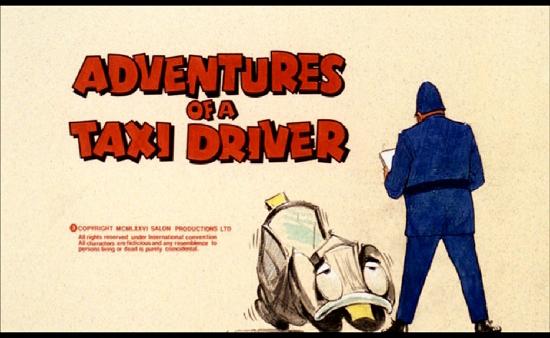
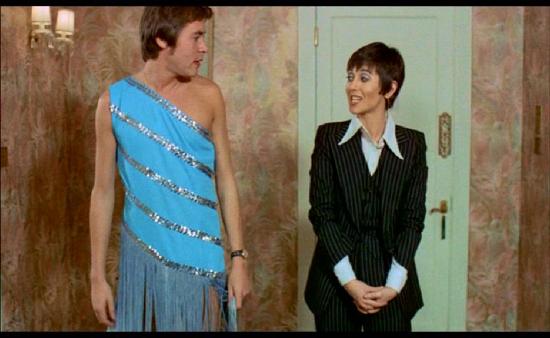
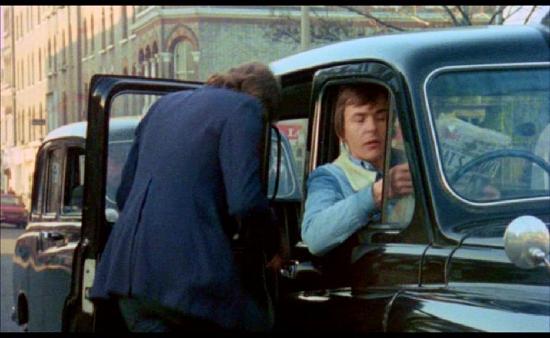
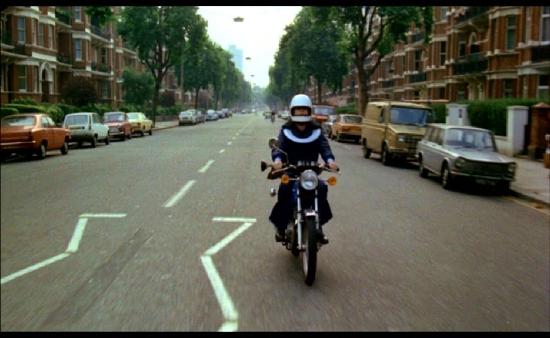
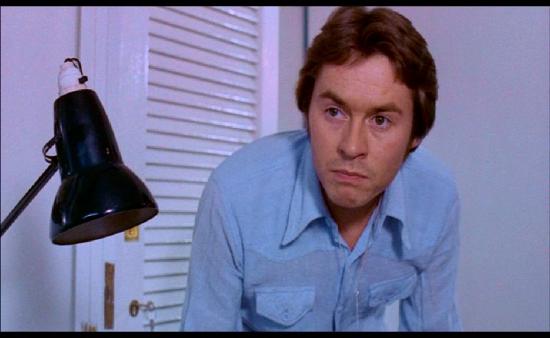
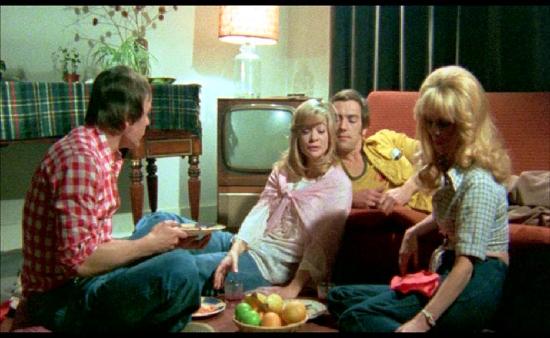
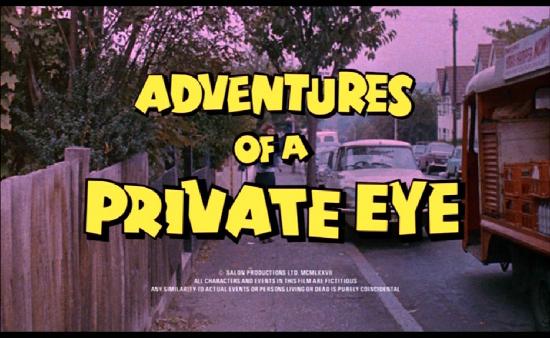
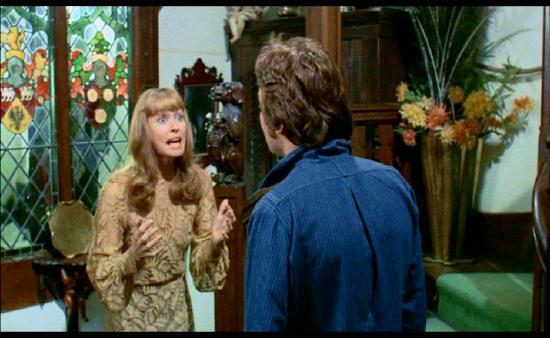
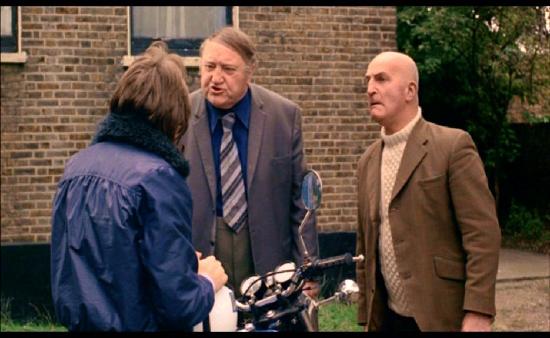
Your Opinions and Comments